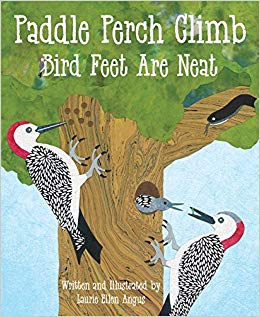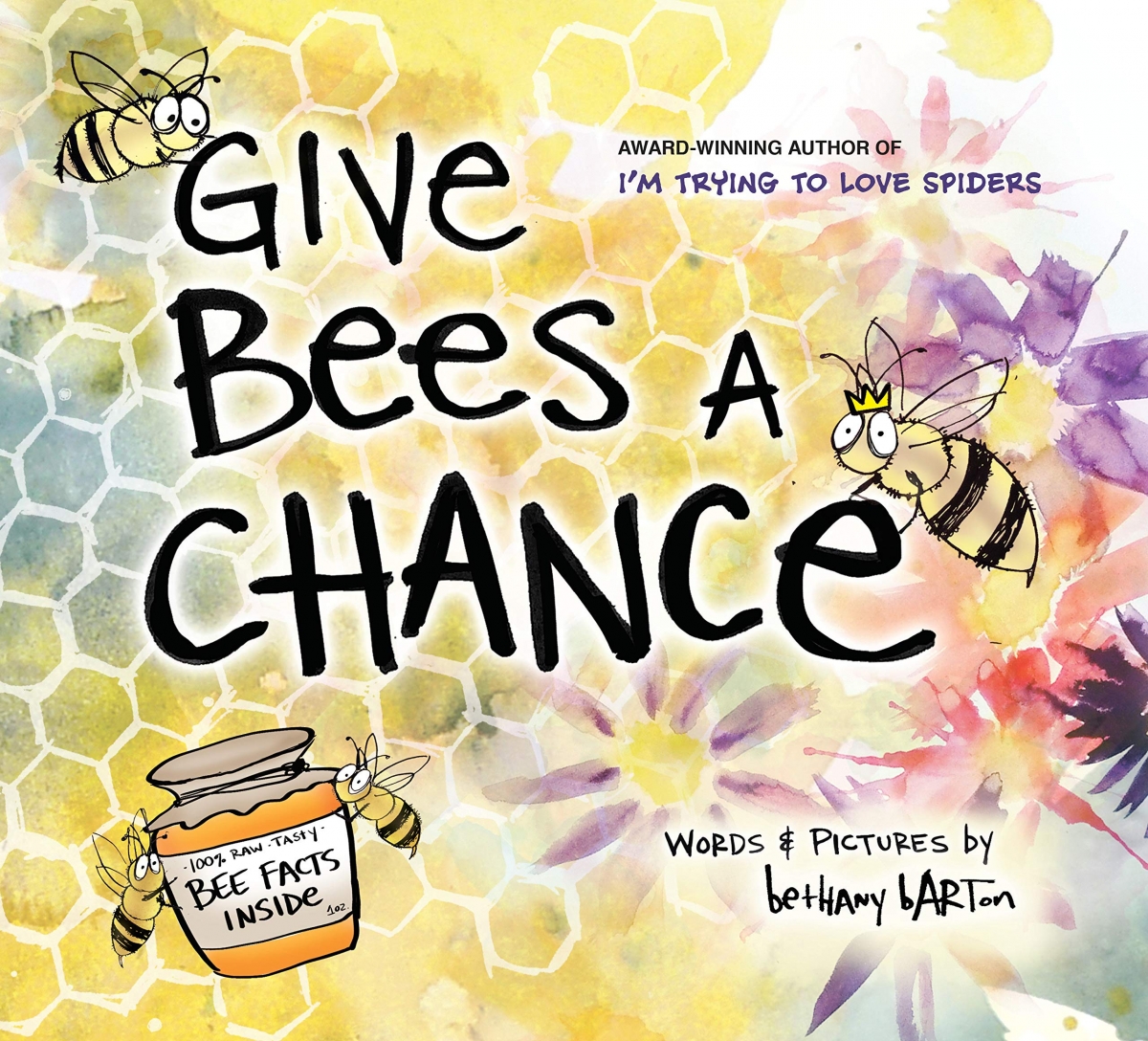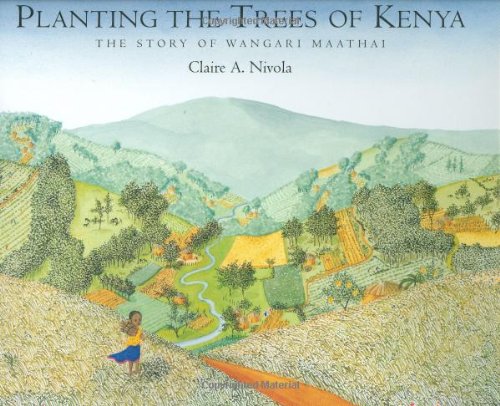Literacy resources are selected with an eye towards scientific accuracy, program relevance, a diversity of characters and reading levels, strong writing, and beautiful illustrations. They are organized in the same Virginia Standards of Learning progression as our catalog. We encourage those interested in these resources to seek them from local and independent booksellers or your local library. Note: most, but not all, of these recommendations include suggested activities.
For more information on these programs, view our catalog and request a program registration here.
Early Explorers (preK-K): observations & investigation

Plants & Trees: Leaf Man - Fiction
Author and Illustrator: Lois Ehlert
Grade: PK- 2 Lexile: Lexile: 460L
Suggested Activities:
-
Practice word and letter, shape, and color recognition during read-aloud.

Plants & Trees: My Leaf Book - Fiction
Author and Illustrator: Monica Wellington
Grade PK - 2 Lexile: Lexile: 450L
Suggested Activities:
-
Practice word and letter, shape and color recognition during read-aloud.
-
Go outside to collect leaves (or bring leaves from home) and create a leaf book. Practice writing by labeling the leaves. (teacher will need to be comfortable identifying leaves OR make a literacy activity of describing the leaves and giving them names based on characteristics)
-
Create leaf rubbings or prints (activities in book)

Plants & Trees: We're Going On a Leaf Hunt - Fiction
Author: Steve Metzger Illustrator: Miki Sakamoto
Grade PK - 2 Lexile: Lexile: 410L
Suggested Activities:
 Weather: Come on Rain - Fiction
Weather: Come on Rain - Fiction
Author: Karen Hesse Illustrator: Jon J Muth
Grade PK - 3 Lexile: AD660L
Suggested Activities:
-
Comprehension read-aloud and paired text lessons can be found at ReadWorks.org.
-
Science and literacy connection ideas can be found at ToolOfTheWeek.org (PDF)
-
While reading, have students make predictions and connect Tesse’s experience with their own experiences of weather (dry and hot, cooling rain, thunderstorms).
-
Track weather over time. View and make forecasts, go outside to test weather conditions, and compare them to forecasts and historical data. What patterns do students notice?
-
As a group, compose a weather song. Practice, record, and dance just like the mamas and the children. If permitted, play in a sprinkler on a hot, hot day.
 Weather: Red Rubber Boot Day - Fiction
Weather: Red Rubber Boot Day - FictionAuthor: Mary Lyn Ray Illustrator: Lauren Stringer
Grade PK - 3 Lexile: AD480L
Suggested Activities:
-
Identify the senses used in the book (smell, sight, touch, hearing) Have students imagine how each of the sensory moments in the book might feel.
-
Have students design a rainwater-capturing machine, then use the captured rainwater to watercolor their favorite rainy-day activity.
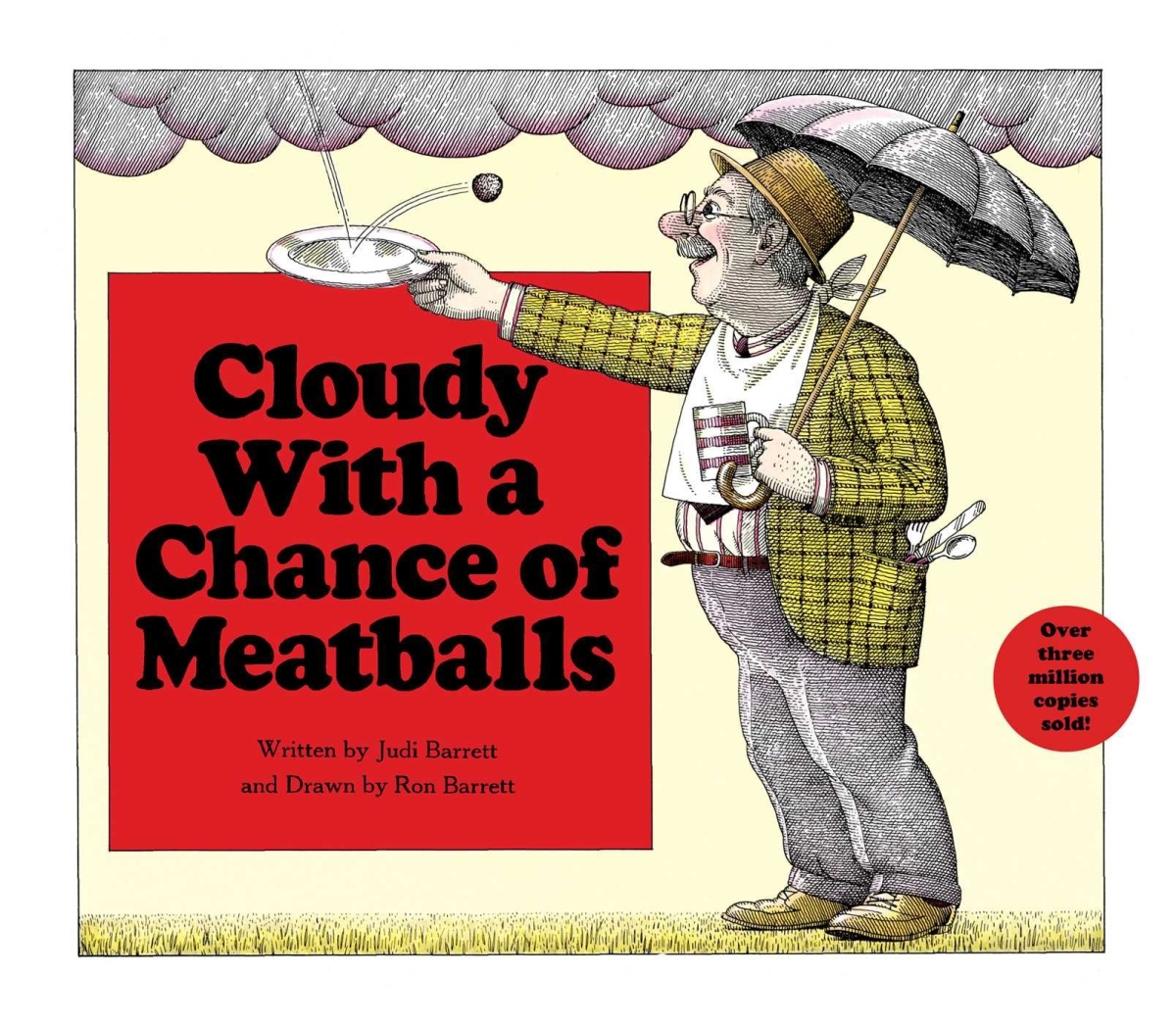 Weather: Cloudy With a Chance of Meatballs - Fiction
Weather: Cloudy With a Chance of Meatballs - FictionAuthor: Judi Barrett Illustrator: Ronald Barrett
Grade PK - 3 Lexile: AD730L
Suggested Activities:
Mammals (preK-2nd): animal life

Born in the Wild: Baby Mammals and Their Parents - Non-Fiction
Author and Illustrator: Lita Judge
Grade: K-3 Lexile: AD900L
Suggested Activities:
-
Use as a research text for learning about specific mammals or mammals in general.

Xander's Panda Party Fiction
Author: Linda Sue Park Illustrator: Matt Phelan
Grade: PK-3 Lexile: AD660L
Suggested Activities:
- Use images from the book* to create sets of party guests (recommended – have an illustration on one side and a real image of the animal on the other so that animal characteristics are more easily seen). Have students sort the guests based on different characteristics as the book is read.
*Be sure to follow copyright laws! Use of these images in the classroom may fall under the fair use provision of copyright law (photocopies DO NOT fall under the classroom exemption), but your agency may require you to contact the publisher for written permission.
Let's Sprout (K - 2nd): plant life processes & needs

A Seed is Sleepy Non-Fiction
Author: Dianna Hutts Aston Illustrator: Sylvia Long
Grade: K-3 Lexile: AD750L
Suggested Activities:
-
Create a seed collection: have students bring seeds from home (hint, look in the kitchen!), look for seeds in the schoolyard, or ask permission to collect seeds in a public place. Sock Seeds are a fun way to collect.
-
Use the seed collection or mixed packets of seeds to sort and classify the seeds based on physical characteristics like size, color, texture, and shape.
-
Try sprouting the seeds from the collection of packets. Set up basic experiments that adjust variables like light, water, soil, and temperature and have students take measurements over time. Record the stages of the plant's life cycle.
-
Additional lessons can be found at the National Agriculture in the Classroom site.

Up in the Garden, Down in the Dirt Non-Fiction
Author: Kate Messner Illustrator: Christopher Silas Neal
Grade: K-3 Lexile: AD730L
Suggested Activities:
-
Connect to seasonal cycles and plant/animal life cycles sprinkled through the book (tomato hornworm, robin) – more info at the end of the book. Create an annual wheel, each student makes the life cycle stages of an organism and puts the different stages on the different seasons.
-
Explore outside. How many of the creatures mentioned in the book can you find? Where should you look for them? Does your schoolyard have everything they need?
-
Create above/below terrariums from two-liter bottles. Make sure you meet all of the life needs of your inhabitants!

From Seed to Plant Non-Fiction
Author and Illustrator: Gail Gibbons
Grade: K-3 Lexile: 560L
Suggested Activities:
-
Guided Reading suggestions from achievethecore.org
-
Kindergarten level read-aloud plan (PDF)
-
Second-grade level plan (PDF)
-
Explore outside and make collections (or take photographs) to make a life cycle collage.
-
Look for patterns and symmetry in the images of the plant parts.

Pumpkin Circle Non-Fiction
Author and Illustrator: George Levenson
Grade: K-3 Lexile: AD630L
Suggested Activities:
-
Pumpkins can be hard to grow and take up a lot of space. Instead, create a "growing" diagram of student understanding in the hallway. Add student-created pumpkin plant structure (vining stem, leaves, flowers, fruits) that demonstrates their learning and models the pumpkin life cycle. (PDF)

Summer Supper Fiction
Author: Rubin Pfeffer Illustrator: Mike Austin
Grade: K-3 Lexile: AD90L
Suggested Activities:
-
Students watch an adult making a meal (in person, or a video) and make a list (written or picture) of all the ingredients. Engage in a class discussion of the ingredients. Which ones come from plants? What part of the plant? Cut out and sort the list based on parts, beginning sounds, ending sounds, etc. What do plants need to grow? While reading, identify the plant life needs. What about people's life needs?
-
National Agriculture in the Classroom "Edible Plant Game"

Plants Feed Me Non-Fiction
Author and Illustrator: Lizzy Rockwell
Gradel: K-3 Lexile: 210L
Suggested Activities:
-
National Agriculture in the Classroom lists several lessons that could work well with this book! One of theirs not listed on this page, the Edible Plant Game, could also work well.
-
Life cycle activities at We Are Teachers may fit well with this text.

Jack's Garden Fiction
Author & Illustrator: Henry Cole
Interest Level: K-3 Reading Level: Minimum age 4 Lexile: 20L
Suggested Activities:
- Story retell to work on sequencing in a story: https://app.seesaw.me/activities/5z6kmu/story-retell-jack-s-garden
- Conduct a seed sort: search for different seeds around your home and bring them in for a show-and-tell learning activity. Describe the seed's physical characteristics and sort based on those properties. Biggest to smallest? Make a rainbow? Who brought the same seeds? Additional suggestions here http://totallytots.blogspot.com/2012/05/jack-garden-seed-observation-once-upon.html
- Make an ecology web. Many organisms are listed in this book. How are they connected?
- Do you have a garden at home? There can be many, many different types of gardens. Some for food, some for pollinators, some to look at. They can ben in the ground or in pots. They can be outside or inside. A garden is a collection of plants that a human cares for. What are your garden experiences? What surprises have you experienced?

Red Leaf, Yellow Leaf Narrative Non-Fiction
Author and Illustrator: Lois Ehlert
Gradel: PK-3 Lexile: AD530L
Suggested Activities:
It's For the Birds (2nd - 4th): adaptations
Counting Birds: The Idea That Helped Save Our Feathered Friends Non-Fiction
Author: Heidi E.Y. Stemple Illustrator: Clover Robin
Grade: 2 - 5
Suggested Activities:
-
Explore birding citizen science opportunities and data at the Audubon Christmas Bird Count and eBird.
-
Have students study images of a bird species of their choosing, then use cut paper shapes to accurately model it.

Look Up: Bird-Watching in Your Own Backyard Non-Fiction
Author and Illustrator: Annette LeBlanc Cate
Grade: 3-5 Lexile: 810L
Suggested Activities:
-
Use for guided observation: read a page as a class, then go outside to practice the skill (eg. Read about beak shapes, observe birds to notice beaks).
Paddle Perch Climb: Bird Feet are Neat Non-Fiction
Author and Illustrator: Ellen Angus
Grade: PK- 3 Lexile: AD480L
Suggested Activities:
-
The end of the book includes suggested lessons on designing a bird with a beak and feet that enable it to thrive in its habitat and creating food chains based on the habitats portrayed in the book.
-
Have students research birds they may see in their area, then create two pages to add to the book (one describing the feet, one showing how the feet help the bird get food in its habitat).
BEAKS! Non-Fiction
Author: Sneed B. Collard III Illustrator: Robin Brickman
Grade: 1 - 3 Lexile: 1G970L
Suggested Activities:
-
Cornell Lab of Ornithology has a nice list of basic activities (PDF)
Author: Margarita Engle Illustrator: Aliona Bereghici
Grade: 1 -3 Lexile: AD90L
Woodpecker Wham Non-Fiction
Author: April Pulley Sayre Illustrator: Steve Jenkins
Grade: 1-3 Lexile: AD970L
Suggested Activities:
-
Carefully observe birds in the wild and draw or describe what you see.
-
Review the features of this biography, and use them to create an outline. Interview an adult in your life and use the outline to write their biography.
Incredible Insects (2nd - 3rd): diversity of life, life cycles
Give Bees a Chance Non-Fiction
Author and Illustrator: Bethany Barton
Grade: PK-3 Lexile: AD590L
Suggested Activities:
-
Search for bees outside. Before going out, set expectations. Observe the bees. How many different kinds of bees can be found? What are they doing? If materials are available, GENTLY capture and sort the bees by type.
-
Invite an expert to come talk to your class. A beekeeper could share about keeping honeybees, and an Extension Agent or Master Naturalist could talk about native bees and their role in the ecosystem.
-
Have students name an insect (or another arthropod) that makes them feel nervous or afraid. Conduct research projects to learn all about those insects and create a poster that tells people why the scary insects are worth having around.
Joyful Noise: Poems for Two Voices Fiction
Author: Paul Fleischman Illustrator: Eric Beddows
Grade: 4-7 Lexile: NP
Suggested Activities:
-
Read, practice, perform. Follow up with a mini-research project investigating an insect of your choosing and create your own two-voice poem.
Vivid Virginia (3rd - 4th): food webs & ecosystems

Hank's Big Day: The Story of a Bug Fiction
Author: Evan Kuhlman and Chuck Groenink Illustrator: Mike Lawrence
Grade: K-3 Lexile: AD550L
Suggested Activities:
-
We recommend using this in conjunction with the following book, Next Time You See a Pillbug, to allow students to compare fiction and nonfiction.
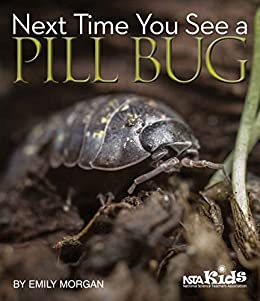
Next Time You See a Pill Bug Non-Fiction
Author and Illustrator: Emily Morgan
Grade: 3-6 Lexile: 900L
Suggested Activities:
-
This is part of the National Science Teachers' Association (NSTA) "Next Time You See a..." series. Activities designed by NSTA include a "Pill Bug Anticipation Guide" (PDF) and "Pill Bug Checkpoint Lab" (PDF). We also recommend using this in conjunction with the previous book, Hank's Big Day: The Story of a Bug, to allow students to compare fiction and nonfiction.

¡Olinguito, de la A a la Z! Descubriendo el bosque nublado /Olinguito, from A to Z! Unveiling the Cloud Forest Non-Fiction
Author and Illustrator: Lulu Delacre
Grade: K-6 Lexile: AD730L
Note: This book is written in both English and Spanish.
Suggested Activities:
-
Observe and identify organisms in the school habitat. Create alliterative sentences for each organism, and translate them into another language (work with school resources or a middle/high school language class for translation).
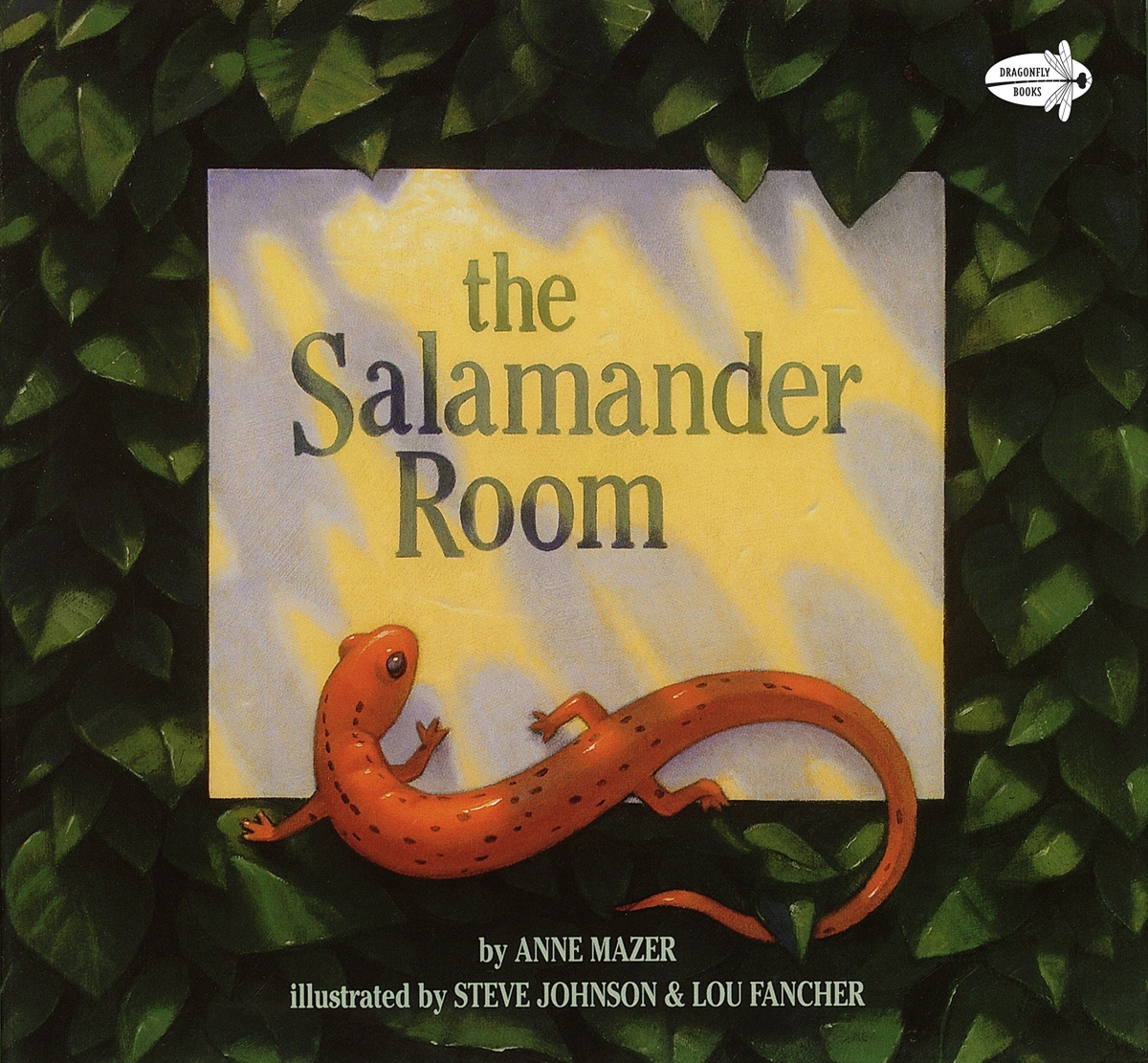
The Salamander Room Fiction
Author: Anne Mazer Illustrator: Steve Johnson
Grade: PK-2 Lexile: AD440L
Suggested Activities:
-
This guided reading plan from Achieve the Core culminates in a persuasive letter demonstrating an understanding of habitat, though we recommend that the persuasive letter is about a wild animal native to Virginia instead of a pet as illustrated in the lesson example. The plan also includes a companion text set with suggested activities. Note: This is aligned with Common Core 1st grade skills, but can be easily scaffolded to 3rd grade reading and is recommended for use with English Language Learners.
 Mushroom Rain Non-Fiction
Mushroom Rain Non-Fiction
Author: Laura K. Zimmermann Illustrator: Jamie Green
Grades: K-3 Lexile: AD900L
Suggested Activities:
 Pollinator Palls Activity Book Non-Fiction (PDF)
Pollinator Palls Activity Book Non-Fiction (PDF)
Author: Kid's Gardening
Grades: Lexile:
Suggested Activities:

Seeds, Bees, Butterflies, and More! Poetry for two voices
Author: Carole Gerber Illustrator: Eugene Yelchin
Grade: PK-3 Lexile: 540L
Suggested Activities:
Scoop on Soils (3rd): soil science

Muddy Max: The Mystery of Marsh Creek Fiction
Author: Elizabeth Rusch Illustrator: Mike Lawrence
Grade: 4-6 Lexile: NA
Suggested Activities:
-
Many of the organisms that live in soil are addressed in this book. Conduct additional research and make a soil ecosystem food web. Do different organisms have different soil habitat needs?
-
Have students think about soil particles. Would sandy mud endow different superpowers than clayey mud? Have students bring different soil samples from outside of school, assess their texture (PDF), and use the particle characteristics to create new superpowers for Max.
-
Additional activities can be found in the back of the book, including: Soil Close-up (examining a soil sample), Make Some Mud (exploratory activity mixing water and soil), Breathing Mud Creatures (testing living creatures in soil), learning about Antoni Gaudi and making drip sculptures, Making Mud Bricks, and Ancient and Modern Mud Houses.
Author and Illustrator: Claire A. Nivola
National Geographic text alignment: Ladders: Mountains, Valleys, and Plains
Grade: K-3 Lexile: AD870L
Suggested Activities:
-
Prior to reading, make a water and soil map of the schoolyard. Where do students see bare soil? Where do they see evidence of water (gutters, downspouts, storm drains…) Are there any connections between bare soil and water? Read the story and revisit the maps/schoolyard. Why do students think the soil is bare in places? What are the possible consequences? How could they help?
Snake Savvy (3rd - 4th): animal behavior

I (Don’t) Like Snakes Fiction
Author: Nicola Davies Illustrator: Luciano Lozano
Grade: K-4 Lexile: AD710L
Suggested Activities:
-
Discuss and use non-fiction text structures like the index and bibliography.
-
Create a table of assumptions and the corresponding facts (slimy v/s dry and scaly). Identify which are characteristics of snakes or reptiles in general and label adaptations.
-
Pair with A Guide to the Snakes and Lizards of Virginia or the Virginia Herpetological Society’s website. Students select a snake and design a new page for I (Don’t) Like Snakes that describes their snake.

Verdi Fiction
Author and Illustrator: Janell Cannon
Grade: PK-3 Lexile: AD620L
Suggested Activities:
-
Guided reading lesson from Achieve the Core with a companion text set and lesson suggestions for those alternative texts.
-
Investigate, diagram, and compare the life cycles of snakes (and other reptiles), insects (and other arthropods/invertebrates), amphibians, mammals, fish, and birds. Discuss and/or write about growing up from the point of view of another animal.

We Can’t All Be Rattlesnakes Fiction
Author: Patrick Jennings
Grade: 4-6 Lexile: 560L
Suggested Activities:
-
Research the pros, cons, and legality of capturing wild animals to keep as pets. Include considerations about the animal’s life needs and its role in the ecosystem. Possible expert sources: Virginia Department of Game and Inland Fisheries, Certified Wildlife Rehabilitator, or contact a local vet or pet store.
-
Using A Guide to the Snakes and Lizards of Virginia or the Virginia Herpetological Society’s website, learn about a snake of Virginia, turn it into a character, and write from its perspective.
-
Additional literacy-based activities are available from Island Readers and Writers (PDF)
Flower Functions (4th): flower structure and function

Pick, Pull, Snap: Where Once a Flower Bloomed Non-Fiction
Author: Lola M. Schaefer Illustrator: Lindsay Barrett George
Grade: K-5 Lexile: AD690L
Suggested Activities:
-
Because the book does not cover pollination explicitly in the main text, this could serve as an excellent assessment opportunity. Scan or photocopy* some of the diagrams. Students can cut them out, then draw or describe the intermediate stages and processes between each diagram.
-
Observation opportunities: peas grow quickly and in cool temperatures. Read the book and plant peas in mid-March for harvest in mid-May. Students can pick (or photograph/draw) and align the different stages to make a timeline, dissect flowers and pods, and observe the process of pollination.
*Be sure to follow copyright laws! Use of these images in the classroom may fall under the fair use provision of copyright law (photocopies DO NOT fall under the classroom exemption provision, but may still be considered fair use), but your agency may require you to contact the publisher for written permission (Note that Harper-Collins advises that it could take 10-12 weeks).

The Curious Garden Fiction
Author and Illustrator: Peter Brown
Grades: PK-3 Lexile: AD840L
Suggested Activities:
-
This excellent list of suggested activities from Perfection Learning (PDF) includes language arts, character education, movement and games, art and music, social science, and science. We particularly like the open-ended activity of having students think about plant needs and then act out the process of photosynthesis.
Rocks Talk (5th): rocks, geology
A Rock is Lively Non-Fiction
Author: Dianna Hutts Aston Illustrator: Sylvia Long
Grade: K - 3 Lexile: IG1110L
Suggested Activities:
-
Rock and mineral collections – over a period of time, assemble at least 3 unique rocks or minerals – one must be shaped or used by people.
-
In class, find the volume and mass of your rocks, and describe its characteristics and possible use. Predict – is each one igneous, sedimentary, metamorphic, or a mineral?
-
Expert help – contact your local soil and water conservation district to have an expert come in to help you identify the rocks and try to figure out where they came from. Make a map of the students’ rocks.
-
Additional ideas can be found in the Chronicle Books teacher guide for A Rock is Lively. (PDF)
Author: Byrd Baylor Illustrator: Peter Parnall
Grade: K - 3 Lexile: 420L - 820L
Suggested Activities:
Watershed Investigations (6th): MWEE

A Long Walk to Water Non-Fiction
Author: Linda Sue Park
Grade: 6-8 Lexile: 720L
Suggested Activities:
-
Students record daily water use for a week, tracking which activities need to have clear, purified water, which clear water, and which could use muddy water. Calculate the volume of water used in a day, and determine the weight of that water. "My Water Footprint" by Project WET is an excellent and similar activity.
-
This "Clean Water For All" (PDF) from World's Largest Lesson (in partnership with UNICEF and with help from UNESCO) explores global issues of inconsistent access to clean sources of water.
-
Where does the water for the school come from, and what has to happen for it to come out of our taps? Visit a water treatment facility either in person or virtually.
-
This book lends itself to an excellent action project for a Meaningful Watershed Educational Experience unit: raising funds to provide clean drinking water for an at-risk population. Specifically, the author recommends Water for South Sudan, however, there are many quality projects all over the world. Ideas for raising money are in the back of the book.
-
Additional activities are suggested on the Water for South Sudan website. We particularly like the Two-Voice Poem (PDF) module.
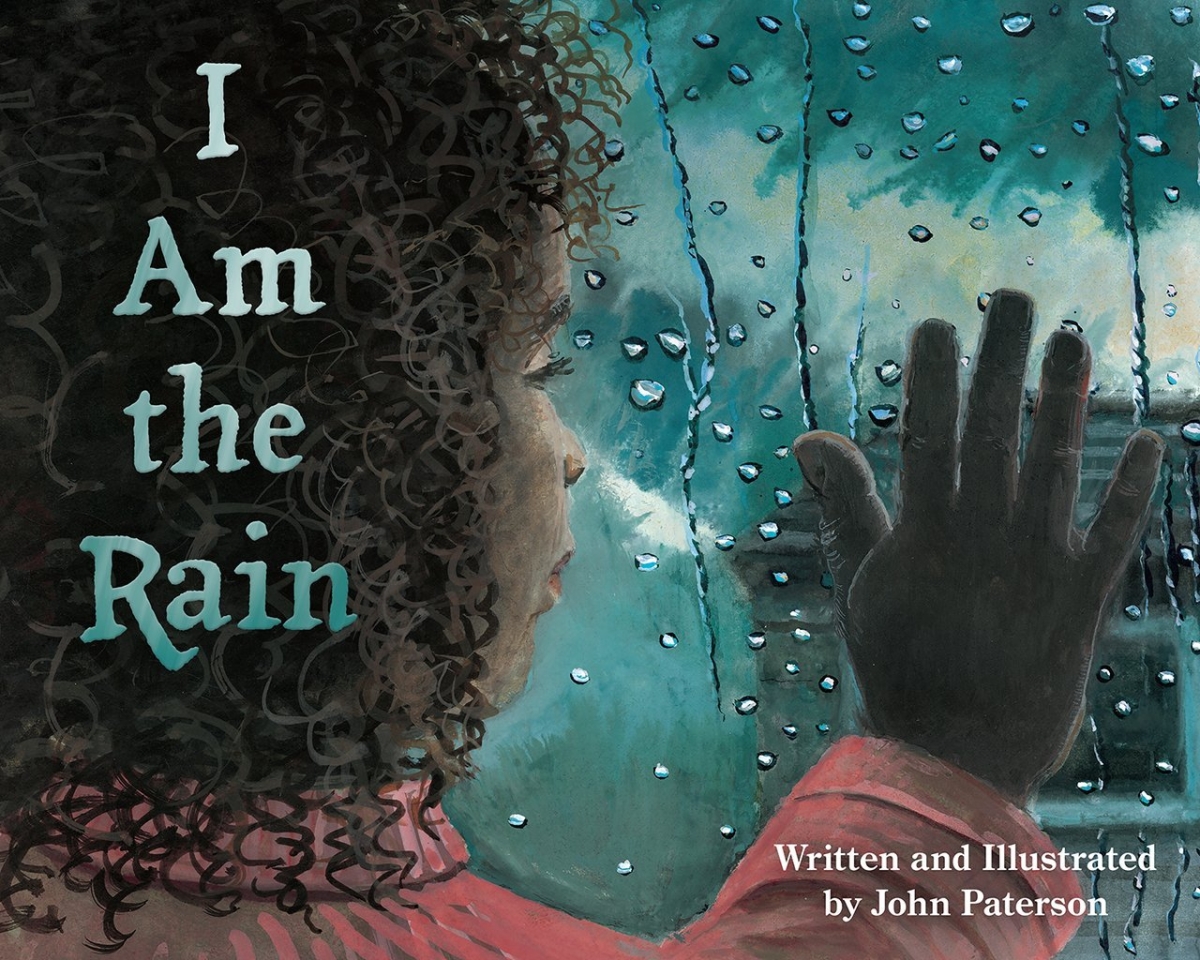 I Am the Rain Fiction
I Am the Rain FictionAuthor and Illustrator: John Paterson
Grade: PK-3 Lexile: AD470L
Suggested Activities:
-
Prior to engaging in water quality testing, use this book as a hook for students. Conduct a read-aloud (even with middle schoolers), and then have students brainstorm additional ways that they interact with water and create an "I Am the Rain" statement about one of those interactions.
-
After water quality testing, select one of the "I Am the Rain" statements (When springtime comes I melt away and run into a creek. Waiting, I'm the ocean bay that searching rivers seek) and have students describe what would be different if one or more of the abiotic parameters were altered.
-
Develop a deeper sense of the watershed by having students use pins or stickynotes to identify places in their watershed where each of the "I Am the Rain" statements could take place.

One Well: The Story of Water on Earth Non-Fiction
Author: Rochelle Strauss Illustrator: Rosemary Woods
Grade: 3-7
Suggested Activities:
-
Project Wet A Drop in a Bucket clearly illustrates how much freshwater is actually accessible.
-
Multiple pages in this book connect to other recommended readings. For example, page 21 has an excellent graphic depicting water use by humans in different areas and could be used in partnership with A Long Walk to Water and The Water Princess. Prior to reading one of the other stories, examine the related page in One Well. Refer back to that page while reading, and use sticky notes to add supporting information.
-
Conduct a schoolyard watershed assessment. There are many schoolyard report cards online (like this PDF from the Chesapeake Bay Foundation) that can be adapted to focus on how the land could influence water. Identify problem areas and suggest improvements.

Author and Illustrator: airfax Water
Grade: 5-9
Suggested Activities:
-
Explore turbidity by placing a constant quantity of tap water into a CLEAR container and reading text through the bottom. Measure and add a small quantity of sediment, stir, and attempt to read the text. Be sure to record quantities and observations. Continue to add sediment in increments until the text is unreadable.
-
Devise a filter to clean turbid water. Engineer (design, test, refine) the most efficient filter possible (produces the most, cleanest water).

The Water Princess Fiction
Author: Susan Verde and Georgie Badie Illustrator: Peter H. Reynolds
Grade: K-3 Lexile: 480L
Suggested Activities:
-
Learn more about water access issues across the world. Create a short story (or comic) from the first-person perspective of someone facing these challenges that can be shared with younger students.
-
Identify organizations working to bring clean water to populations without access. Students brainstorm a way to support an organization's mission.
Arbor Sleuth (6th - 8th): classification & identification
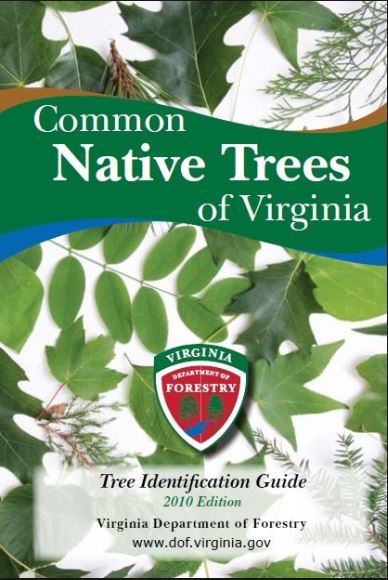
Common Native Trees of Virginia Non-Fiction
Note: can be purchased here, or downloaded as a PDF (at the time of webpage creation, this was the link to the DOF PDF)
Author: Virginia Department of Forestry
Grade: NA Lexile: analyzed at 800L-900L
Suggested Activities:
-
Identify trees in the schoolyard or collect specimens from home to ID. Non-native (exotic) trees will not be in the key, however after students become comfortable with using the key – perhaps they could make a key for their schoolyard.
-
Pair with Seeing Trees to give the technical vocabulary meaning.
-
Perhaps calculate “value” of the trees in terms of lumber or other values and uses or even carbon sequestration.

Seeing Trees Non-Fiction
Author: Nancy Ross Hugo Illustrator: Robert Llewellyn
Grade: NA Lexile: NA
Suggested Activities:
-
Art connection: collect fallen or broken pieces to carefully observe and record (sketch, paint, sculpt, photography). Pair with Common Native Trees of Virginia for vocabulary and other details.

Wishtree Fiction
Author: Katherine Applegate
Grade: 3-6 Lexile: 590L
Suggested Activities:
-
List animals in the book, and create a web of interdependence.
-
Each animal and tree species has its own naming protocol. Discuss and have students choose and justify their own naming protocol and name.
-
Have a wishtree day. Select a tree in the schoolyard to be a wishtree (perhaps have campaigns for different trees). Record wishes on biodegradable materials (color-coded for items wanted wishes, silly wishes, people to people wishes, and so on). Wishes should be recorded on materials that can be used by wildlife/decay.

Champion: the Comeback Tale of the American Chestnut Tree Non-Fiction
Author: Sally M Walker
Grade: 5-9 Lexile: 1070L
Suggested Activities:
-
Chapters 1 & 2 discuss the history and economics of this tree. Students can create a timeline of events mentioned
in the text and add others from American history. The timeline can be extended through the remainder of the book
to cover the history of restoration efforts. Timelines are sometimes represented as rings on a tree, which could be
a nice visual. -
Specific economic uses are listed in chapter 2. Make a list of the uses of a chestnut tree, research each use, and describe modern parallels. Crossover into mathematics: calculate the value of the tree for each use and adjust for modern inflation. How valuable could an acre of healthy chestnut trees be?
-
Scientific literacy: three different efforts to save the American chestnut are described in chapters 4-7. Make pro/con tables for each method, and have students select a method to defend in a debate or persuasive writing piece.
-
The American Chestnut Foundation (TCF) also maintains resources for educators. Find those here.
Young Ecologists (7th): Interdependence of Life
Spring After Spring: How Rachel Carson Inspired the Environmental Movement Non-Fiction
Author and Illustrator: Stephanie Roth Sisson
Grade: K - 3 Lexile: AD790L
Suggested Activities:
-
Conduct a schoolyard assessment (PDF). Are there areas of the property or management programs that reduce or even damage ecosystems and diversity? Help students investigate ways to take action and implement their plans (persuasive writing, PSA video, presentation before a board or committee, even petitioning to plant habitat enhancements).
K-3 BWET MWEE and National Geographic resources
Integrated reading (nonfiction and fiction books)
For more information about this project, including lesson plans, please visit the K-3 LITERACY PROJECT WITH CLARKE COUNTY PUBLIC SCHOOLS page.
This presentation/slide show highlights numerous books (both purchased and readily available at libraries) that can be used to enhance literacy by connecting outdoor learning experiences to level-appropriate books and school curriculum. The presentation provides examples of outdoor activities and journal suggestions for each book.
Additional Book and Outdoor classroom pairings can be found in this presentation.
Note: These presentations are tailored to Clarke County Public Schools, VA. References to library info are local to that area.


